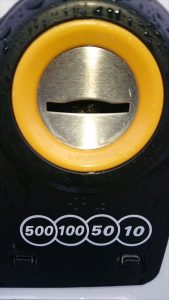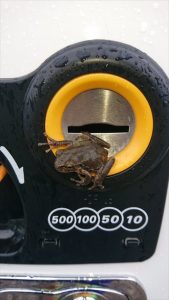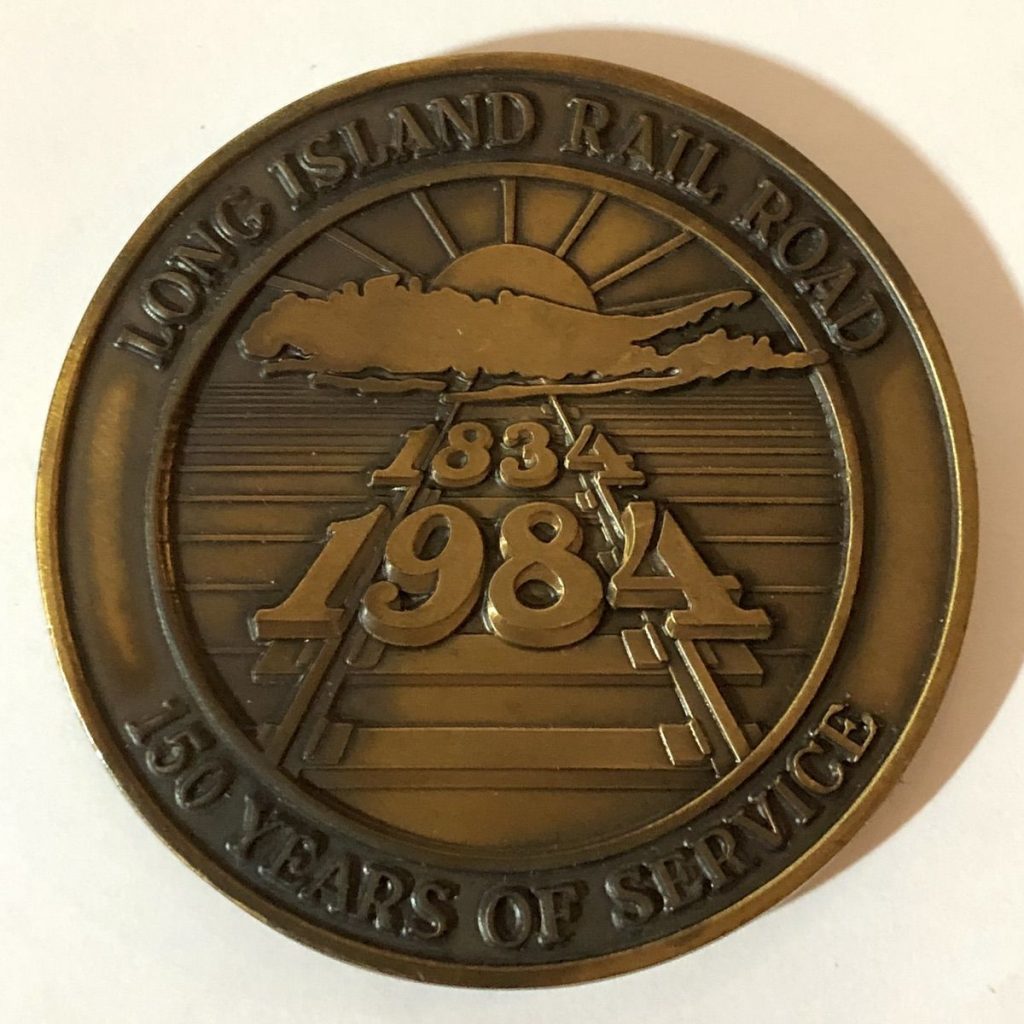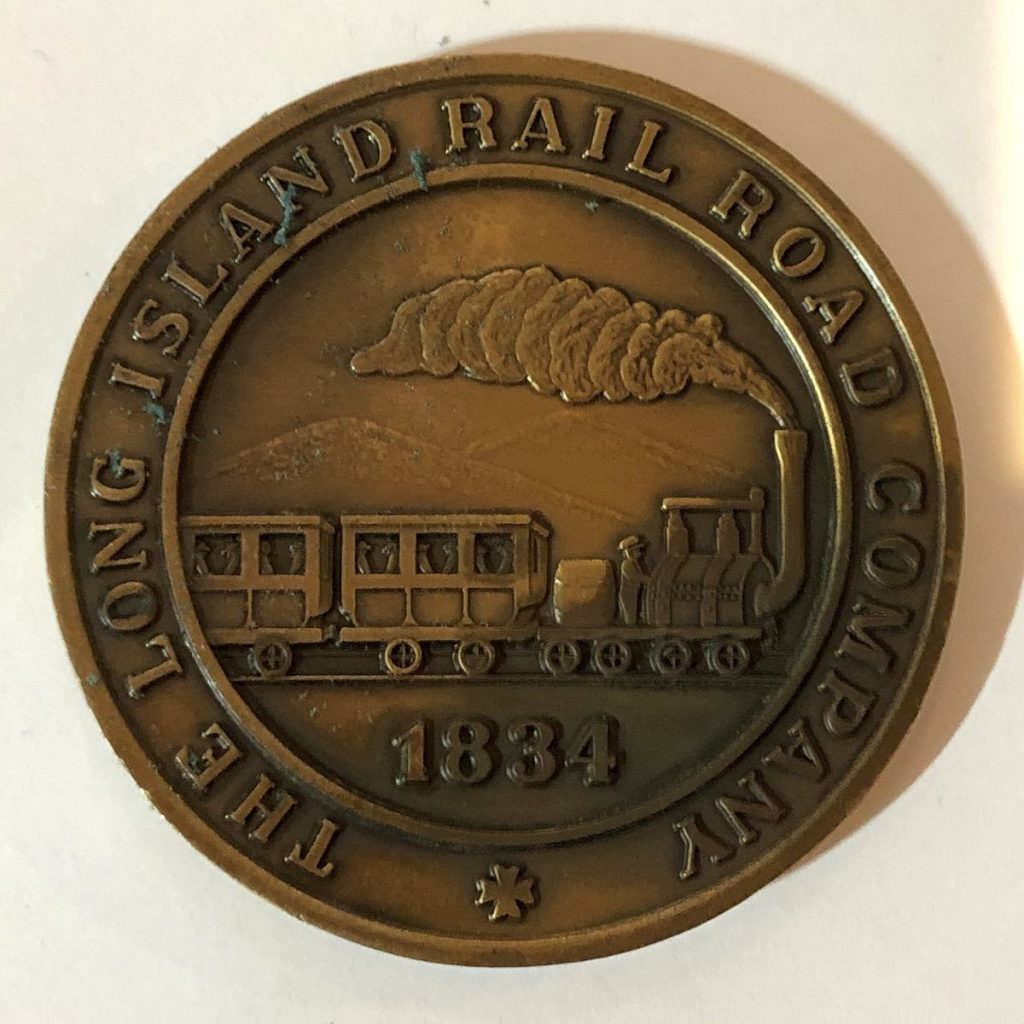Weekly World Numismatic News for March 20, 2022
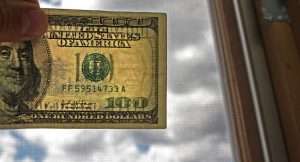
An example of a $100 Federal Reserve Note printed on a bleached $5 note (Image courtesy of Prescott Police Department via AOL.com)
Hollis Forteau, 38, of New Jersey, was convicted on two counts of counterfeiting in 2015 for bleaching low denomination notes, printing $100 on the blank paper, and passing them as real currency. Since most people continue to use iodine pens to detect counterfeit currency, the counterfeit notes will pass the test.
Professional counterfeiters know it is easy to pass bleached currency. Rather than understanding the embedded security features of real currency, stores continue to rely on technology that the criminals know how to defeat.
Although the counterfeiter is convicted, the damage will affect the businesses he scammed and their customers. The businesses do not get compensated for the lost revenue for each counterfeit note, and those businesses will have to recover the lost revenue by raising prices. Nowadays, with inflation increasing, the business can bury the rise in inflation concerns.
The consumers end up paying for these cases.
Businesses should be encouraged to train their employees to recognize the anticounterfeiting embedded into United States currency by the Bureau of Engraving and Printing.
And now the news…
 → Read more at centralbanking.com
→ Read more at centralbanking.com
 → Read more at miamiherald.com
→ Read more at miamiherald.com
 → Read more at foxbusiness.com
→ Read more at foxbusiness.com
 → Read more at theatlantic.com
→ Read more at theatlantic.com
 → Read more at greaterkashmir.com
→ Read more at greaterkashmir.com
POLL: What Guide Should be Next
 Over the weekend, I received the report telling me how many people downloaded my new e-book Coin Collector’s Handbook: American Eagle Coins. Thank you to everyone who purchased a copy! If you have not purchased your copy, you can do so today. For $9, the e-book is a description of the American Eagle Program from its inception in 1986 through 2019 without the fluff.
Over the weekend, I received the report telling me how many people downloaded my new e-book Coin Collector’s Handbook: American Eagle Coins. Thank you to everyone who purchased a copy! If you have not purchased your copy, you can do so today. For $9, the e-book is a description of the American Eagle Program from its inception in 1986 through 2019 without the fluff.
Did you know that the book described all of the special issue American Eagle coins, including anniversary and partnered series like the Legacies of Freedom set? There are mintage figures for every coin and set in the book. I plan to update the book annually, including updated mintage figures and new designs.
Now, it is time to move on to another guide.
The Guides are designed for the collector to add to your collecting experience. They provide essential information that every collector wants to know without a lot of extra details.
I started with the American Eagle coins because it generates the most interest on the bog. For the next guide, I have taken a few of the topics of interest, sorted the list, and will ask you, the readers, what you would like to see next.
A Field Guide to Detecting Counterfeits and Scams will be written for the everyday collector to understand how they can protect themselves. The Guide will explain how to look at the coin and pictures of coins at the strike, understand why you should understand precisely how a coin is to look, and what to do if you buy a counterfeit coin. This Guide will also look at the over-promising sales pitches some companies use, especially on television, that causes people to overpay.
Guide to Modern U.S. Circulating Commemorative Coins will look at each of the changing coins produced since 1999. It will cover every coin from the 50 State Quarters Program through Innovation Dollar with descriptions, design, mintage figures, and more. The book will include other related collectibles produced by the U.S. Mint, including coin covers and the 50 State Quarters Bears.
Guide to Defining Your Own Collection has been a popular question since I posted a redefinition of the Lincoln Cent Type Set. Since asked from creating different type sets, there were other ideas based on different themes. How about a collection of American buffalos or bison? Birth year sets are common, but what about collecting world coins from every year of your birth? Over the years, I have collected many different ideas for creating more than coin collections.
Guide to Modern Dollar Coins beings with the Eisenhower Dollars, the last series of large dollar coins, and continues to the Native American and Innovation dollar coins. In between, there are a lot of stories, controversies, composition changes, and presidents. Although the coins are easy to collect, this guide will add to your appreciation of these coins.
Something else tells me that you are interested in another topic. It does not have to be something that fits into a narrow topic. Most collectors have a broad interest that cannot be classified into a neat topic. I am willing to explore something out of the ordinary.
Weekly World Numismatic News for September 27, 2020
This week’s fun story comes from Japan, where coin-operated machines sell everything from candy to bitcoin. A user of a coin-op machine in Japan found that the coin slot was looking back at him.
The eyes looking back were of a tiny frog that is common in the countrysides of Japan. The frogs are so small that they seem to find their way into interesting places. It is unusual to find one of these frogs in a vending machine, especially in the cities.
According to the story, the vending machine user posted his adventure on Twitter. He tried to use small change to coax the frog out of the machine. Eventually, the coin’s weight caused the frog to seek an escape and jumped out of the coin slot.
As the Twitter user (@potetodaze1129p) wrote, “When you look into the abyss, sometimes the abyss looks back at you.”
If you want to read an interview describing the reaction from @potetodaze1129p, you can find the story here (in Japanese) or translated into English here.
And now the news…
 → Read more at sturgisjournal.com
→ Read more at sturgisjournal.com
 → Read more at marieclaire.co.uk
→ Read more at marieclaire.co.uk
Weekly World Numismatic News for September 20, 2020
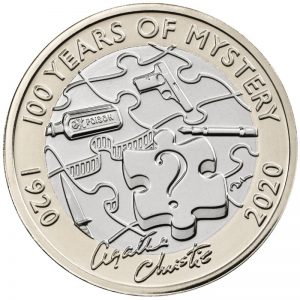
A brilliant uncirculated version of the new £2 coin, which features jigsaw pieces and a replication of Dame Agatha Christie’s signature (The Royal Mint/PA)
In the meantime, the Royal Mint issued a £2 coin commemorating the 100th Anniversary the publishing of Agatha Christie’s first novel, The Mysterious Affair At Styles. The exciting design featuring a puzzle with a missing piece and implements from the novel had several Coin Collectors Blog readers wondering why the U.S. Mint could not produce something similar for American literature.
Then there was the announcement that the late owner of the Utah Jazz amassed a collection of 1,600 quality coins that is estimated to be worth about $25 million. Larry H. Miller, an entrepreneur from Salt Lake City, was a fixture of the city’s business scene for his business and his support of professional sports. Miller died in 2009 at 64 years old, leaving behind the collection that nobody other than his family knew about.
The Larry H. Miller Collection, which includes an 1804 Draped Bust Dollar, will be auctioned by Stack’s Bowers Galleries later this year. The proceeds from the auction will go toward constructing a children’s hospital in Lehi, Utah, a city south of Salt Lake City.
The news of the Miller Collection appeared to excite more people in the collecting world than the other stories. Although the other coins are obtainable to the average collector, numismatic rubberneckers watch the rarities that most cannot afford.
Just as rubbernecking slows down traffic on the highway, numismatic rubbernecking slows down the growth of the hobby. The hobby can revel in a previously unknown collection uncovered from their hiding places, but it should not be the standard in which collections are judged.
We should be collecting stories with the coins. Without the stories, the coins are just pieces of metal with designs. Yes, the 1804 Dollar has a heck of a story, but very few can afford to collect that story. But show me someone who collects coins based on comic book characters, historical humans, historic events, sports themes, or has created a theme that tells their story, and you will be showing me someone who is enjoying their collection.
And now the news…
 → Read more at metrowestdailynews.com
→ Read more at metrowestdailynews.com
 → Read more at barrons.com
→ Read more at barrons.com
 → Read more at uk.news.yahoo.com
→ Read more at uk.news.yahoo.com
 → Read more at ksl.com
→ Read more at ksl.com
 → Read more at fool.com
→ Read more at fool.com
 → Read more at finance.yahoo.com
→ Read more at finance.yahoo.com
Announcing the Coin Collectors Handbook and Guides
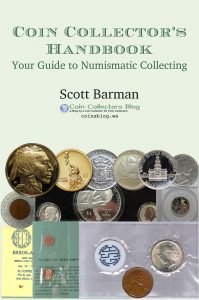 Today I am announcing the Coin Collector’s Handbook release and the Coin Collectors Handbook Series of Guides.
Today I am announcing the Coin Collector’s Handbook release and the Coin Collectors Handbook Series of Guides.
Since writing the first article on the Coin Collectors Blog in October 2005, I shared my collecting experiences and collected knowledge with his worldwide audience. After 15 years, it was time to give back to the hobby by creating a guide book based on my experience.
The Coin Collector’s Handbook is by a collector from the perspective of a collector. The book takes the most popular posts and pages from the blog and republished them in book form for the average collector regardless of what you collect. I want to see people enjoy collecting coins or anything else they like without being told that they must create a specific set.
The Coin Collector’s Handbook can be ordered online at the introductory price of $17.95 with free shipping. That is $2.00 off the list price! Just click here to order your copy.
Coin Collector’s Handbook Guides
 During the recent quarantine, collectors have been using their available time to learn more about their collections. In the last several months, the most popular posts have been about the American Eagle Bullion Program.
During the recent quarantine, collectors have been using their available time to learn more about their collections. In the last several months, the most popular posts have been about the American Eagle Bullion Program.
Using my previous posts about the American Eagle Bullion Program, posts from the blog are now available in e-book form. The book opens with an essay about the American Eagle Program’s start, followed by chapters that expand on the original posts with coin specifications, design details, and mintage statistics. It includes a glossary of terms used in the book.
Coin Collectors Handbook: American Eagle Coins is available to download as a PDF ![]() from the blog’s new Buy Me A Coffee Shop for $9.00, just three cups of coffee!
from the blog’s new Buy Me A Coffee Shop for $9.00, just three cups of coffee!
Based on what the blog readers are clicking on, there will be more guides to come. Stay tuned!
Another Desktop Treasure Hunt Find
My desk is nowhere near being clean and organized as I would like it to be. Tonight, I lifted a stack of papers looking for something and found my Long Island Railroad Sequicentenial bronze medal.
 The Long Island Railroad (LIRR) is the largest commuter railroad in the United States. The LIRR runs the length of Long Island to bring commuters into New York City in the morning and home in the afternoon. The LIRR is part of everyone’s life in Nassau or Suffolk Counties, even if you are not a commuter.
The Long Island Railroad (LIRR) is the largest commuter railroad in the United States. The LIRR runs the length of Long Island to bring commuters into New York City in the morning and home in the afternoon. The LIRR is part of everyone’s life in Nassau or Suffolk Counties, even if you are not a commuter.
When the LIRR was chartered on April 24, 1834, its mission was to provide rail service between New York City and Boston. The service used a ferry connection between Greenport on Long Island’s North Fork and Stonington, Connecticut. Weather and other issues forced that route to stop operating in 1849, but overland routes continued.
The Pennsylvania Railroad purchased the Long Island Railroad in 1900. They broke up the service that went north to Boston and the Long Island segments. The northern service is now part of Metro-North, the third-largest commuter railroad. The LIRR remained as a service to Long Island for both commuter and freight rail.
After World War II, the new middle class began to purchase more cars, causing a decline in ridership. In the early 1950s, New York State began to subsidize commuter rail services around New York City. By 1965, the state purchased the LIRR from the Pennsylvania Railroad to create the Metropolitan Commuter Transportation Authority (MCTA). A short time later, the state bought Metro-North from the New York Central Railroad, who previously purchased it from the Pennsylvania Railroad. When the state completed the purchase of the three remaining subway lines, the agency was renamed the Metropolitan Transportation Authority (MTA).
Today, the MTA is responsible for the New York City Transit Authority (subway and busses), the bridges and tunnels in New York City, the LIRR, Metro-North, and a cross-jurisdiction police department run under state authority. The MTA partners with New Jersey Transit for the parts of their service that run in New York. New Jersey Transit is the second-largest commuter rail service.
Remarkably few railroads have survived in the United States, but the LIRR is still going. The LIRR is the oldest commuter rail service in the United States. It was quite an accomplishment to celebrate 150 years. Along with the announcements of service improvements, the LIRR created many souvenirs, including a bronze medal.
The Medallic Arts Company designed and struck a 64mm (2.5 inches) 5mm thick bronze medal for the LIRR. The obverse depicts the logo the LIRR used to celebrate the sesquicentennial. The reverse uses a logo found on stock certificates from the mid 19th century. It may not have been the original logo, but it was the oldest found.
The surface of the medal has an antiqued finished and appears to have a shellac coating.
Senior executives received the medals as a bonus, and many were given to VIPs. Employees could purchase medals from the LIRR Public Affairs office in Jamaica Station for $8 per medal. To purchase the medals, employees had to provide their “IBM Numbers” at the purchase time.
For those not old enough to remember, “IBM Numbers” were early employee identification numbers. The name came from the number a computer, the company’s IBM mainframe, and assigned to the employee. Companies that used the system would use a punchcard system to identify employees.
The medal is not common but not scarce. Several years ago, an inquiry to the LIRR about the medals amused their public relations department. Aside from not having records that old, nobody in the office worked for the LIRR when the medals were issued.
A casual study of the market shows that most are missing the presentation box. The presentation box was likely only available to the executives and VIPs. It is more difficult to find the medal with the original presentation box.

